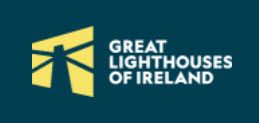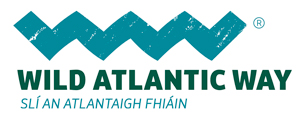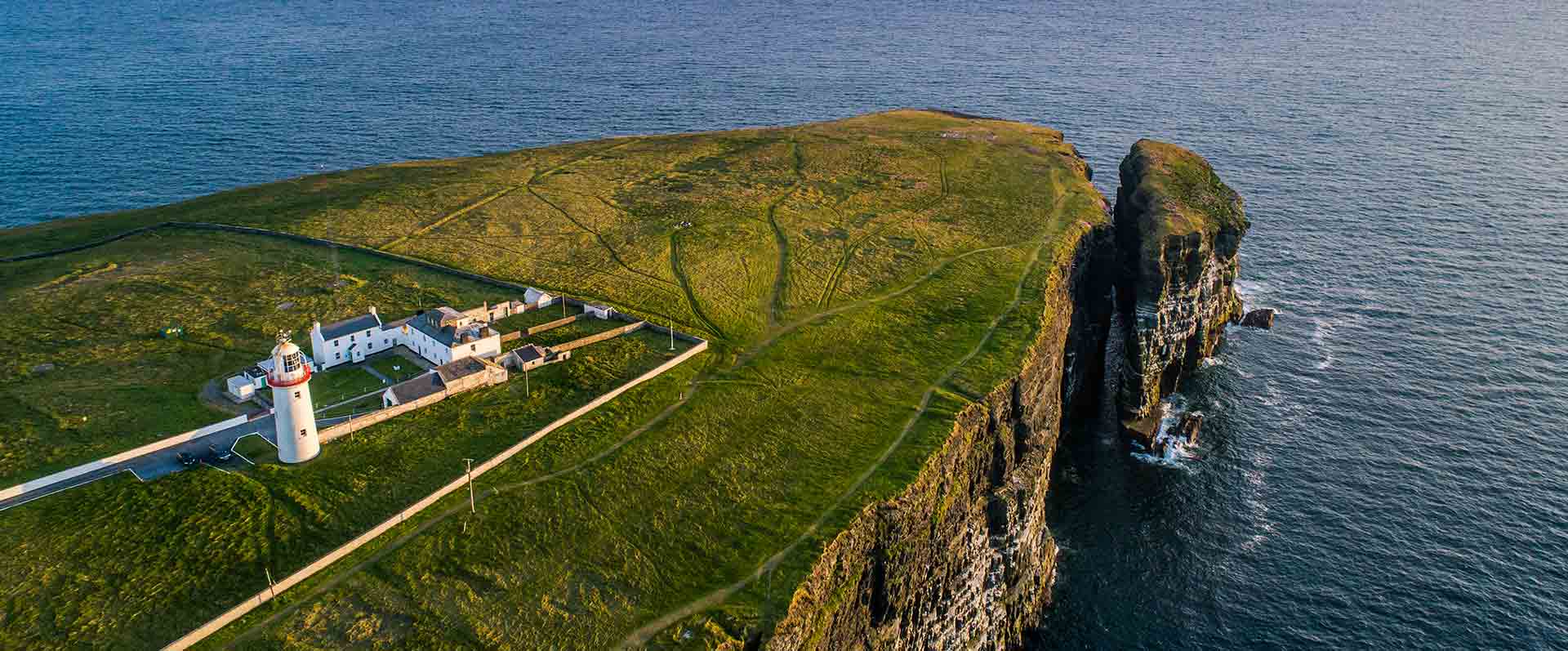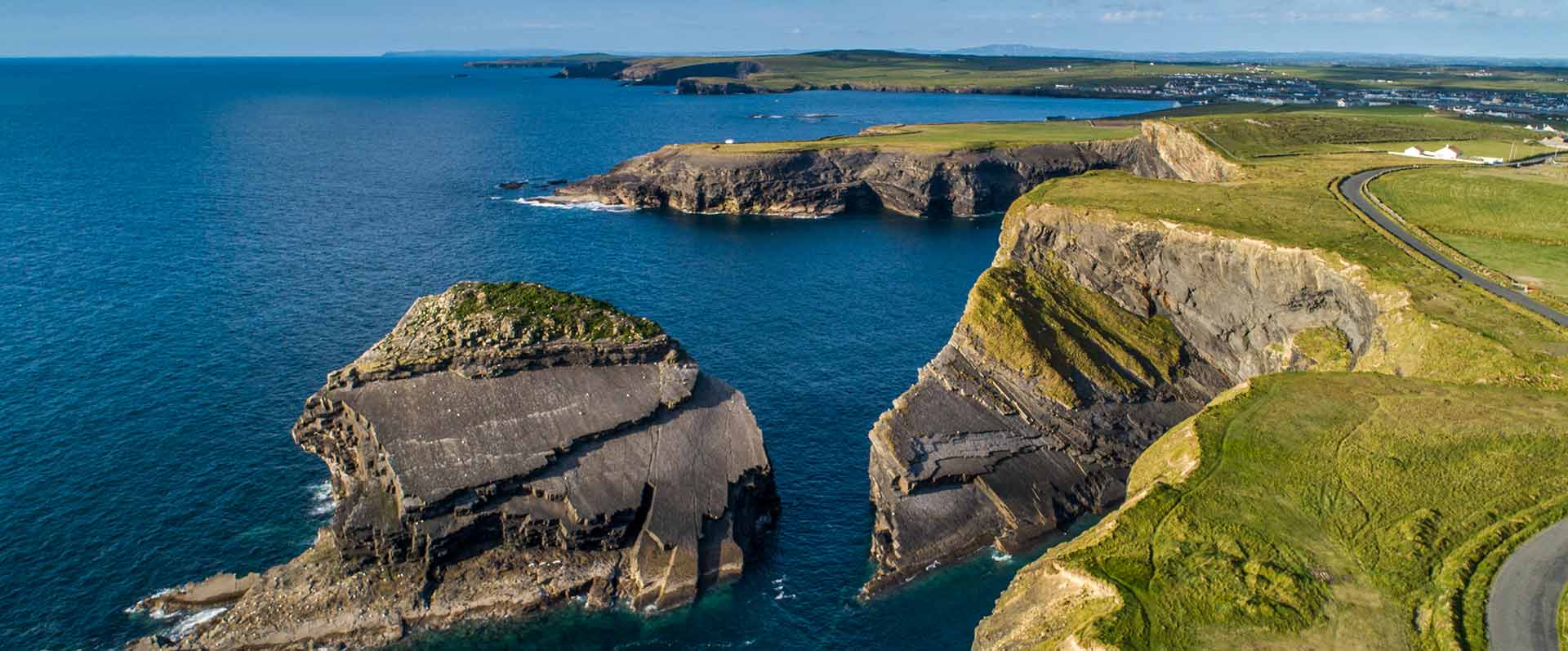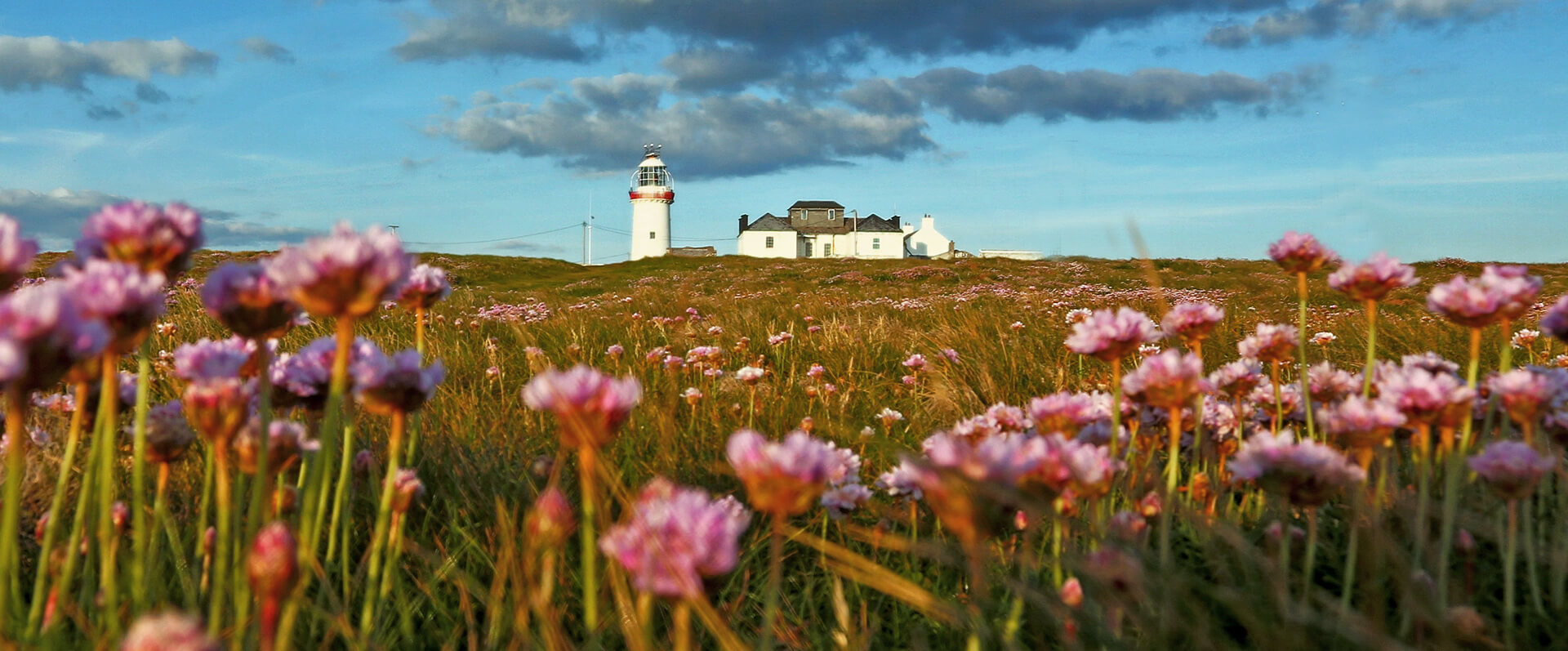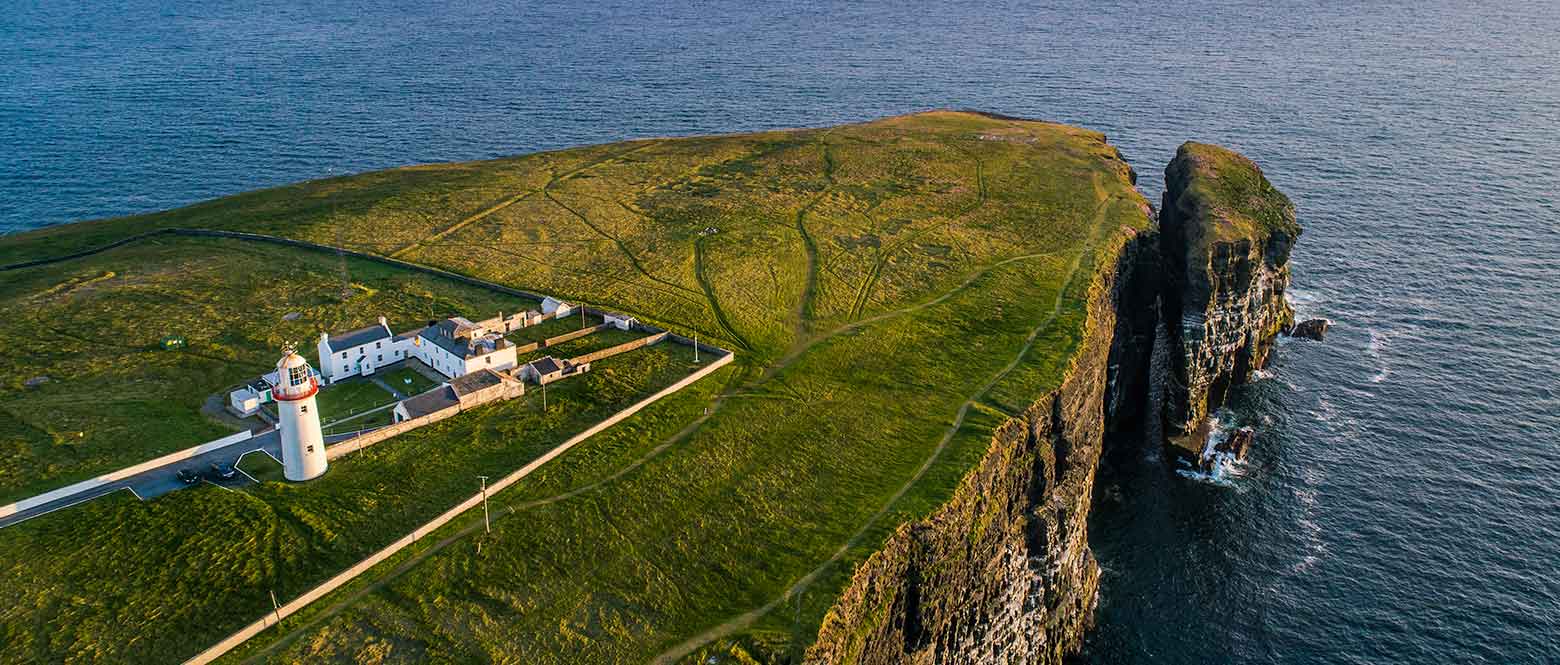
The Lighthouse
Experience This Fascinating
Piece of History
“I can think of no other edifice constructed by man as altruistic as a lighthouse. They were built only to serve.”
- George Bernard Shaw
Proud, beautiful, graceful, ever-watching over our beautiful part of the world. Loop Head Lighthouse is situated on the scenic Loop Head peninsula in County Clare, Ireland – the cliff-girt headland that separates the sheltered water of the Shannon Estuary from the roaring waters of the Atlantic Ocean.The lighthouse is the major landmark on the northern shore of the Shannon River , with 90 metre high views of the sea down to Kerry Head and Dingle across the Shannon and up the Clare coast, and to the Cliffs of Moher in the north. Loophead Lighthouse is one of the most important lights on the Irish Coast, guarding the entrance to the busiest river in Ireland, the River Shannon, since 1670.
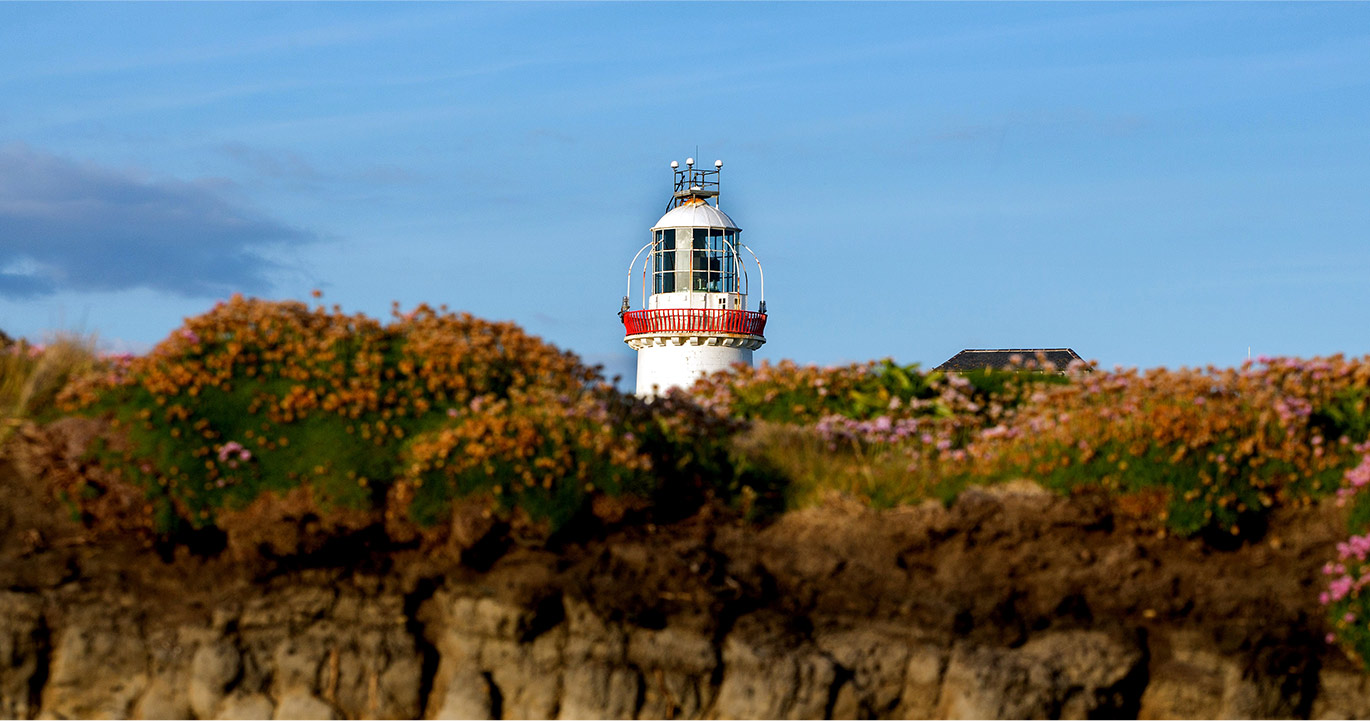
Every Lighthouse Tells a Story
There’s something about a lighthouse that fascinates. Their job is simple – to warn passing ships that they are close to rugged and dangerous coastline. But the light they shine is more powerful than this: they are guiding lights, symbols of strength, shelter and protection, guiding people to safety. This is a story that speaks to us – as do the curious lives of the lighthouse keepers who captain the stations. Loop Head Lighthouse captures all of this essence – wrapped up in a fascinating new experience of discovery for you and your family to enjoy.
Our History
Loop Head Lighthouse is rich in maritime heritage. With its origins stretching back to 1670, a visit to the Lighthouse is a fascinating look at days gone by.
In the early days of the Lighthouse, it was one of four known Irish stone vaulted cottage type lights. The cottages accommodated the light keeper and his family in two or three rooms, and had an internal stone stairway between two of the rooms leading up to a platform on the roof. Here a coal-burning brazier or chauffer was positioned. Part of the old cottage with its battered outside wall can still be seen here.
In 1802, the first ‘tower’ lighthouse was built, which was then replaced with a new tower in 1854 designed by George Halpin. 1869 was a landmark year for the lighthouse when its light changed from being fixed to flashing. The flashing pattern of a lighthouse is called its ‘character’ – and Loop Head’s is a white light that flashes four times every 20 seconds. In 1898 the fog signal was established, and in 1955 a radio beacon was introduced to transmit its Morse signal every two minutes during fog conditions.
In 1971 the lighthouse was converted to operate electrically, and in 1991 it was automated. Today it is one of 70 lighthouses operated by the Commissioners of Irish Lights, around the coast of Ireland – and continues to play a vital role in maritime safety.
Loop Head Lighthouse is a free-standing, circular plan single bay, four-stage lighthouse – surrounded by a metal framed blazed lantern with a metal walkway and cut limestone walls. It is 23m high and its current range is 23 nautical miles (42 km or 26,5 miles).
Part of Great Lighthouses of Ireland
Loop Head Lighthouse is part of the Great Lighthouses Of Ireland initiative, which comprises 12 lighthouses situated in breath-taking coastal locations. This initiative invites visitors from home and abroad to visit or stay in one of Ireland’s lighthouses, to find out about its history and take in the stunning natural world that surrounds it. At the same time, the programme lets you discover the technology at work in lighthouses today, and to meet the people who are passionate about these very special places.
Signature Discovery Point on the Wild Atlantic Way
Loophead Light House is one of two Signature Discovery Points in County Clare along the route of the magnificent Wild Atlantic Way.
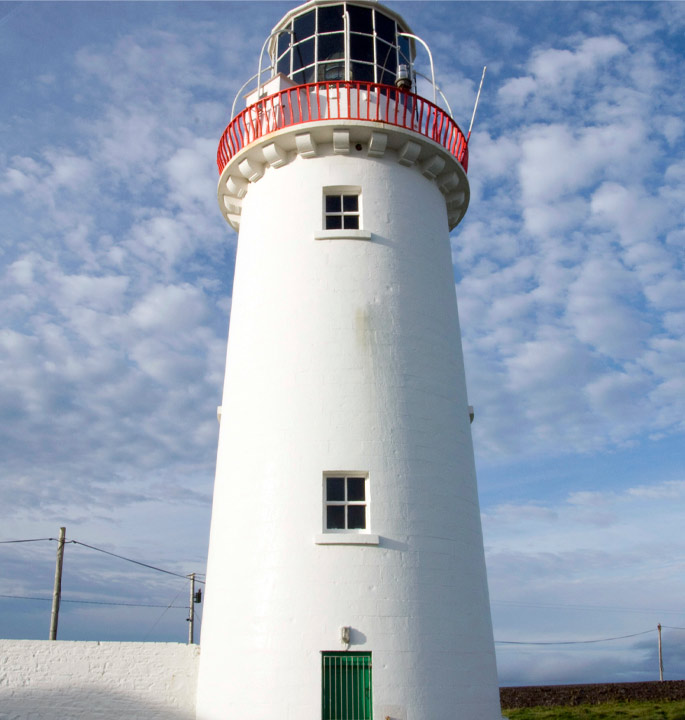
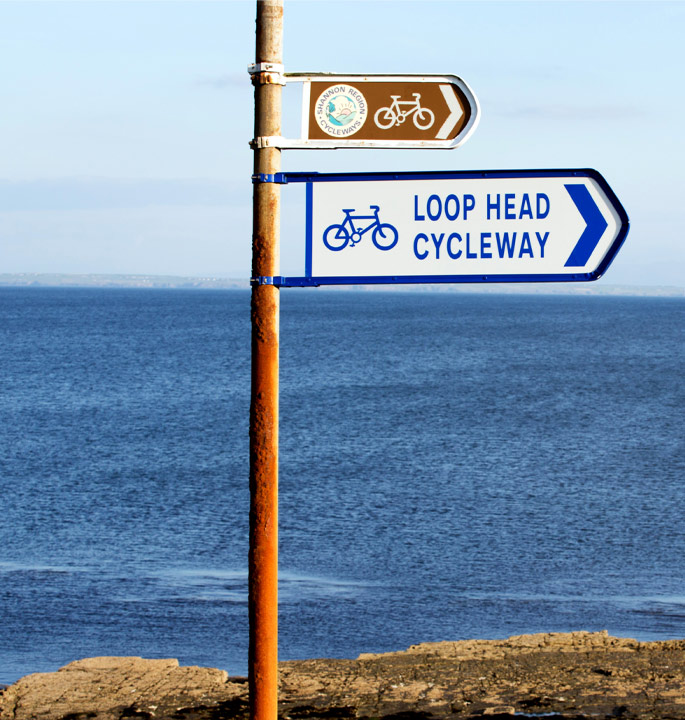
Coming Soon – a New Story to Tell
We’re excited that Loop Head Lighthouse is looking towards a truly bright future. The Loop Head Lighthouse Visitor Experience is being re-imagined and has received funding under the Rural Regeneration and Development Fund – to greatly enhance your experience with us.
The remodelling will result in a truly iconic, immersive, imaginative and engaging visit for all, comprising…
More for you – the lighthouse keeper’s house (comprising two houses) will be conserved and restored – with tourist accommodation in one house and visitor centre in the other. There will be a Visitor Information and Interpretation Centre, as well as a tea room.
More to experience – a new Lighthouse Experience will see the guided tour boosted with graphic panels, interpretation and soundscape.


 Book Accommodation
Book Accommodation
